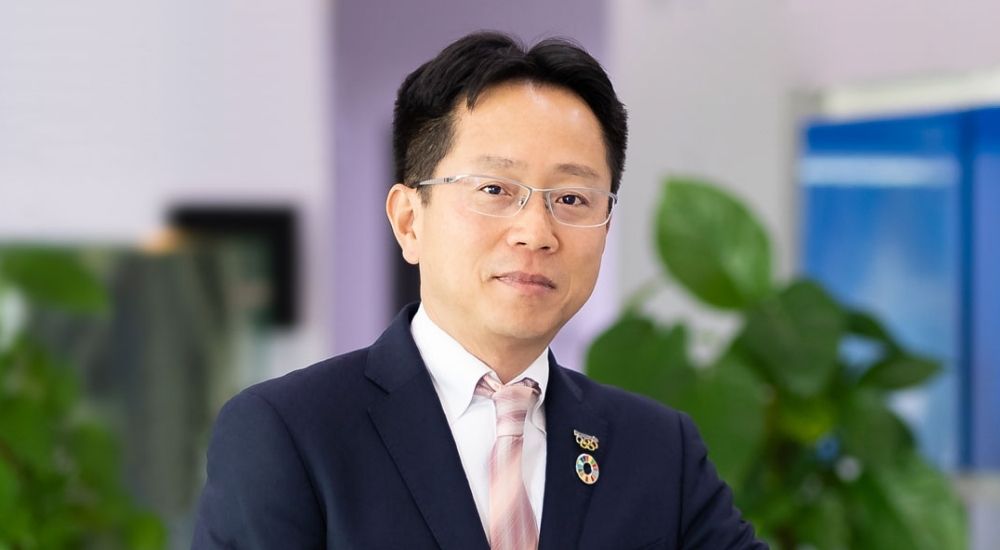Leadership working with zero margin for error

The Covid-19 pandemic has rendered many of the old business practices obsolete. We had to quickly adapt our business models while also managing a suddenly remote, distributed workforce. As the post-pandemic world transitions into a new normal, leaders must re-evaluate their needs and challenges upfront to keep the business running. With that, a digital transformation is no longer a nice-to-have option. It has become an essential component of evolving into the hybrid workforce model.
Several challenges lie ahead as we transition into the new form of work. And it was not all roses for business leaders, either. They were expected to step up and continue meeting strategic goals on the go while facing unparalleled stress, uncertainty and tough decision-making.
The transformation to digital indeed comes with its own challenges, prominently lack of training and employee engagements. It is essential to have the know-how and proper tools to keep the business running. Suppose employees lack the knowledge to adapt to the changes or adequate training in the new technology.
In that case, the company can quickly run into trouble. As enterprises are hurried under pressure to meet the deadline, they might make premature systems implementation without the proper data to support.
This could lead to significant failures. Some of the significant challenges faced by today’s technology leaders include information and data security. With more and more automation and artificial intelligence tasks taking centre stage, data security has become ever more critical and will remain so post-pandemic.
The world is experiencing significant shifts in activity levels, changes in daily schedules and productivity tool usage, etc. Many big organisations have announced plans to continue operating remotely until the end of 2021 or shift more long-standing.
Despite the challenges, working from home is one of the most desired models for top executives and job seekers. Panasonic was one of the major companies that swiftly implemented remote working as the pandemic spread in 2020 for its employees.
However, being a manufacturer, we cannot move to a completely remote work system. Work from home is here to stay. Hybrid workplaces will be the norm for the foreseeable future. Flexible work hours, and a few days a week in the office have resulted in higher productivity for our Middle East office. Businesses have to find the right balance between the two, but most importantly, implement technologies and communication systems that allow their employees to seamlessly switch from online to physical to online.
As we slowly emerge from the global pandemic, business leaders have a clearer picture of how resilient their business models are and where improvements are needed to operate successfully. Enabled by digital culture, they can use that knowledge to redefine themselves, reinvent work, and put their companies on course for future success.
There has never been a better or more urgent time for business leaders to reflect, take a step back and build a stronger foundation. A solution-oriented approach to everyday work will become a more sustainable practice. Companies that are ready to reinvent and adjust to the new paradigm, which is the working present, will succeed.
According to recent studies, the future of team leadership is multimodal. Effective leadership in this new hybrid world requires different skills that go beyond traditional team leadership. One essential skill that leaders should possess is the tactical agility to maintain focus on short term business objectives while accepting and fully embracing unpredictability.
Leaders should keep a growth mindset, which is essential to steady the ship in these volatile times. Leadership in crisis is a double-edged blade, it is a privilege, and a burden. Hence, leaders need to dig deep, keep positive and motivated, focus on controlling the controllable’ and be sure to energise, enthuse and motivate their teams to face forthcoming challenges.
Top executives also experience burnout, perhaps not at the level as the other employees. Covid-19 has left a lasting impact on most businesses, and C-suite executives have been focused on solving the new problems arising from the present scenario. Basically, leaders are left with zero margins for error. It also means that one does not realise they are at their maximum until it’s too late.
A recent survey revealed that burnout and fatigue are equally concerning for employees working remotely as well as those in a physical workplace.
The best tactic is to be emphatic. By understanding that there is fear and anxiety about returning to the office and parental pressure among employees as children move to e-learning, leaders can build strategies that solve their problems and improve efficiency at the workplace. This can mitigate stress and burnout for both leaders and employees as well as help build trust. Leaders should just know that we are all sailing the same ship.
Technology is helping organisations in thwarting cyber threats as workplaces become digital with open access and collaboration happening online. As IT functions play an instrumental role, CIOs and CTOs have to balance between bringing in systems to support the workforce and also think of budgetary constraints and business priorities.
Furthermore, health, safety, and well-being of employees have become a priority for all organisations.

Traditionally, HR and environment, health and safety were two separate operation domains, the latter focusing more on accidents and compliance. But today, a CTO or CEO is also responsible for the safety of their team, and the business hierarchy has become more horizontal and collaborative than delegation, reporting structure. It will remain so in the future as open communication and consensual decision making has improved organisational efficiencies.
KEY TAKEAWAY
- With automation tasks taking centre stage, data security has critical and will remain so post-pandemic.
- Businesses have to implement technologies that allow employees to switch from online to physical to online.
- Business leaders have a clearer picture of how resilient their business models are and where improvements are needed.
- Enabled by digital culture, they can use that knowledge to redefine themselves, reinvent work.
- There has never been a better or more urgent time for business leaders to reflect.
- A solution-oriented approach to work will become a more sustainable practice.
- Companies ready to reinvent and adjust to the new paradigm will succeed.
Top executives also experience burnout, perhaps not at the level as other employees, and do not realise they are at their maximum until it is too late.





